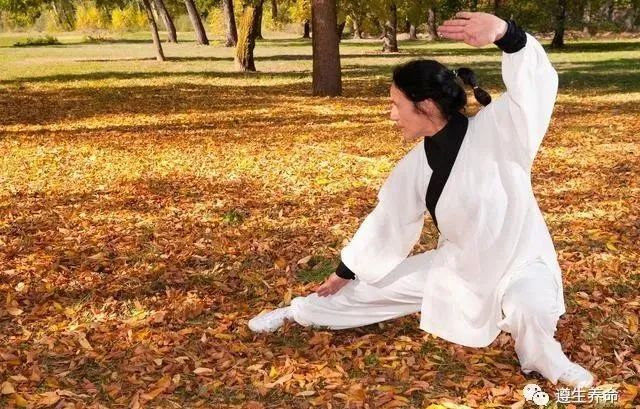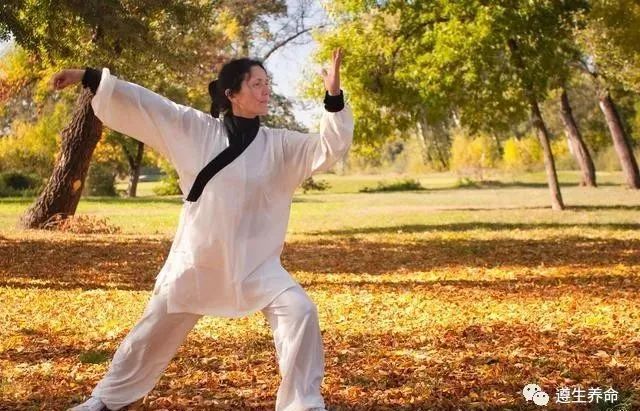Qigong, as an independent discipline, possesses its own characteristics. Familiarity with the characteristics of Qigong is of great significance for guiding research and practice in Qigong. The characteristics can be summarized into the following three aspects.
1. Holism
Holism is a characteristic of the physiological effects of Qigong. Structurally, Qigong is an exercise method composed of body adjustment, breath adjustment, and mind adjustment. Its implementation is through a trinity approach to cultivate and unify the internal refinement of essence, Qi (vital energy), and spirit with the external refinement of tendons, bones, and skin into a complete activity process. This means that the integrity of the exercise method determines the holistic effect of Qigong.

Qigong studies fall within the realm of life sciences, so the physiological effects of Qigong on living organisms are fundamental to Qigong studies. Research results indicate that the physiological effects of Qigong on the human body are extensive and profound, affecting the whole person, systems, organs, tissues, molecules, and atoms.
The regulatory effects of Qigong on energy metabolism and immune function represent the holistic effect; the regulatory effects on the nervous system, cardiovascular system, and respiratory system represent the systemic and organ effects; and the regulatory effects on DNA, cAMP, and photons represent the cellular, molecular, and atomic effects.
The human body is an open, nonlinear, multi-layered complex mega-system. According to the theory of synergy, the human mega-system is a composite made up of many interacting subsystems. In the state of Qigong, the human body exhibits orderly stable structural forms and organizational activity processes at different levels, thereby demonstrating physiological effects at various levels.

The theory of synergy tells us that the properties of the whole cannot be reduced to the sum of the properties of the parts. Similarly, the properties of the parts within the whole differ from those in isolation. Therefore, in this sense, Qigong therapy is neither a localized treatment for specific symptoms nor a specific therapy targeting certain pathogenic factors. If Qigong is regarded as a form of exercise, it must belong to a complete and comprehensive exercise method, distinct from physical exercise, breathing exercises, mental health practices, or hypnosis training, which are all singular exercise methods.
2. Introspection
Introspection is a characteristic of the operational function of Qigong. Qigong is a process of adjusting, enhancing, and improving the functional activities of the mind and body. Therefore, some define Qigong studies as the science that reveals the complex life phenomena and laws of the interaction between the mind and body.
Indeed, the scientific research objects of Qigong include both psychological behavior phenomena and physical behavior phenomena. The scientific community has conducted in-depth studies on human mind-body activities using reductionist and vitalist perspectives and methods, achieving significant development. Reductionism and vitalism belong to the realm of Western scientific culture, thus adhering to the verificationist creed of the Western scientific community.

Verificationism leads to a misconception that what can be measured exists objectively, while what cannot be measured does not exist. This belief is detrimental to the development of natural sciences. Limited measuring instruments cannot capture the infinite phenomena of the universe, and moreover, limited measuring instruments are always of limited function and sensitivity. Therefore, phenomena that cannot be measured do not necessarily not exist.
Furthermore, Western scientific research methods typically operate on the basic model of the observer (subject) understanding the observed (object), which separates the subjective from the objective. For this reason, Western experimental methods may not be the best or only way to understand the living world, especially when exploring deep psychological behaviors and phenomena.
Ancient philosophers, guided by the holistic view of the correspondence between heaven and humanity, created the introspective method of understanding through long-term practice. The introspective method, also known as the inner inquiry method or intuitive method, is a way of understanding oneself and the world through direct awareness and experience of the mind and body, without relying on language or text. In terms of introspective form, it seems to possess the characteristics of sensory knowledge, being direct, concrete, vivid, and dynamic. Therefore, some refer to the introspective method as “direct experience.”

Traditional Qigong theory holds that the introspective method is a highly advanced and profound awareness activity, thus qualitatively differing from the lowest and most superficial sensory knowledge activities. Professor Suzuki from Japan refers to the introspective method as a “method of directly entering the essence of things,” while the renowned American psychologist Dr. Fromm points out that the “direct category of introspection transcends the knowledge of the subject-object split.” The introspective effect is rooted in the state of Qigong, which is the fundamental attribute of Qigong. Therefore, introspection is a basic characteristic of the operational function of Qigong.
3. Practicality
Practicality is a characteristic of the fundamental content of Qigong. The practice of Qigong is a self-practice process. Without practice, Qigong would be merely a name without substance. Therefore, practicality is the basic content and essential characteristic of Qigong.
Practice is all activities in which people purposefully transform and explore the objective world under certain social conditions. Practice is both the premise of human emergence, existence, and development, and the foundation of human cognitive activities. The conscious awareness exhibited by individuals in social labor practice can be summarized into two basic forms: “object consciousness” and “self-consciousness.” This means that as individuals perceive the external world as the object of their activities, they also form self-awareness about themselves. Through practice, individuals differentiate between the self (subject) and the external world (object), thus achieving the differentiation of subject and object.

The purpose of Qigong practice is to explore the mysteries of life; thus, it should be categorized under the realm of “scientific experimental practice.” However, it differs from general scientific experimental practice:First, Qigong practice is a process of the subject transforming the subject, while general practice is a process of the subject transforming the object. Second, Qigong practice is a process of achieving unity between subject and object, while general practice is a process of realizing the separation of subject and object.
As a form of practice, regardless of its unique attributes, Qigong practice cannot be separated from the three fundamental characteristics of general practice: objective materiality, conscious initiative, and social historical characteristics. Here, I will briefly discuss one of the characteristics of Qigong practice: conscious initiative.
In Qigong practice, individuals are both the subject of knowledge and the object of knowledge, as well as the subject of practice. Humans, as the most intelligent beings, are conscious and advanced animals; therefore, human Qigong practice must be a conscious, purposeful, and planned activity of initiative.

Based on the fact that “initiative is a characteristic of practice, and practicality is a characteristic of Qigong,” abandoning initiative would strip Qigong of its essence and erase its nature, thus turning Qigong practice into mere talk. For this reason, practitioners must highly value the importance of initiative in Qigong practice and fully understand its necessity.
Moreover, in Qigong practice, it is essential to adhere to the principle of combining theory and practice; otherwise, Qigong practice will be blind, erroneous, and unsuccessful. In light of this, practitioners should respect practice while also placing great importance on the significance of Qigong theory.
(Tian Hongji)
Okra Recipe for Soothing Throat and Moistening Intestines

